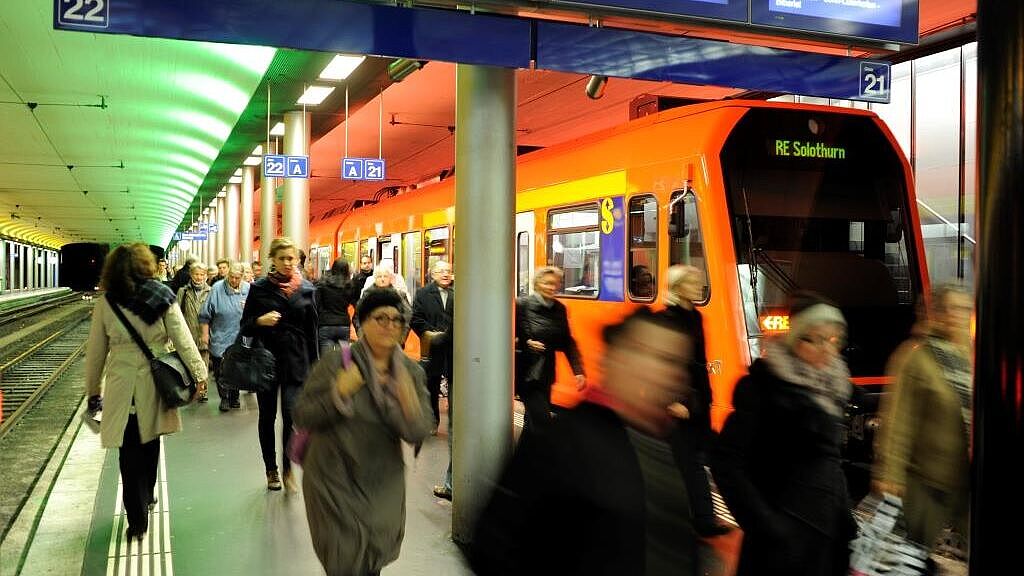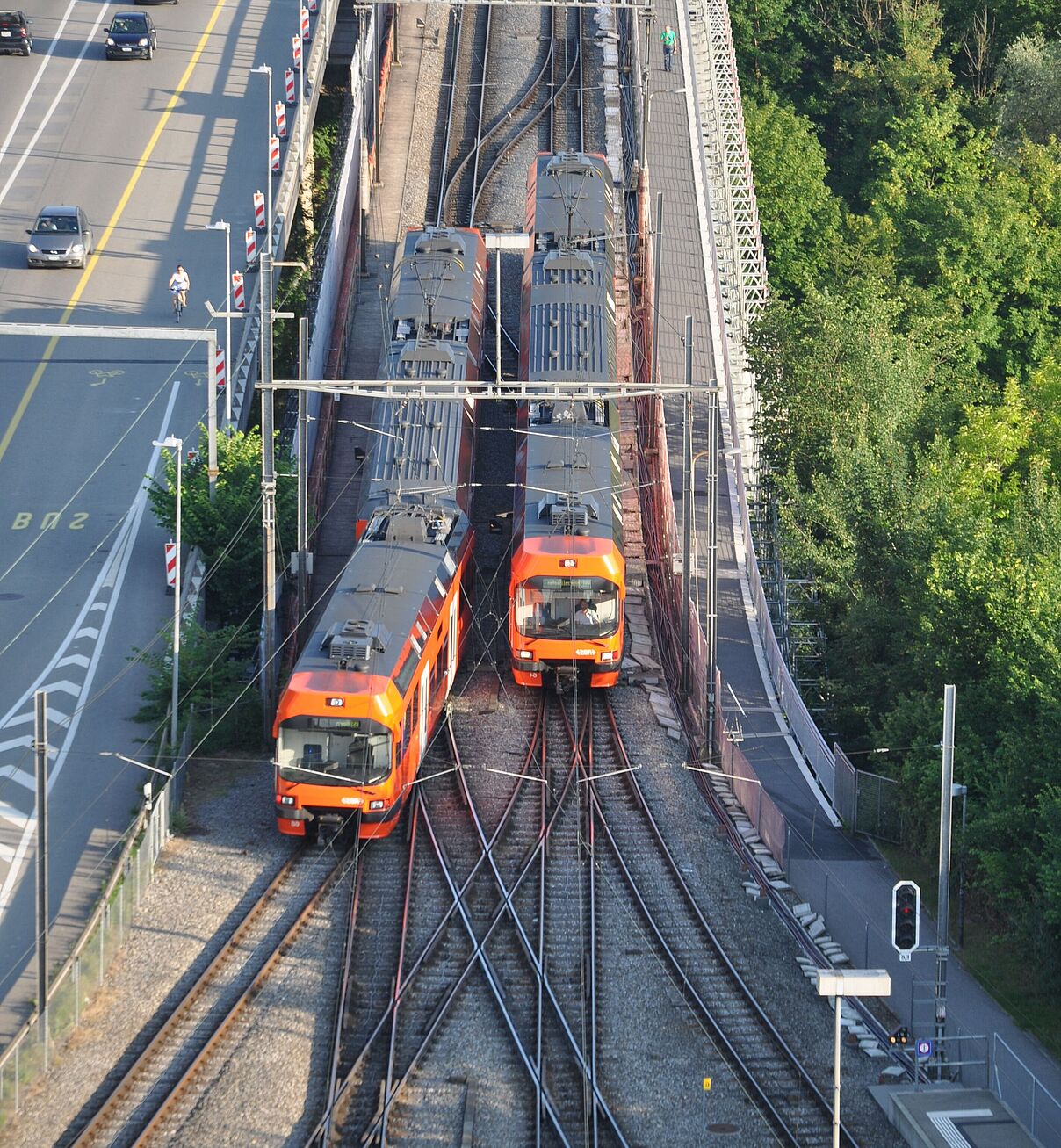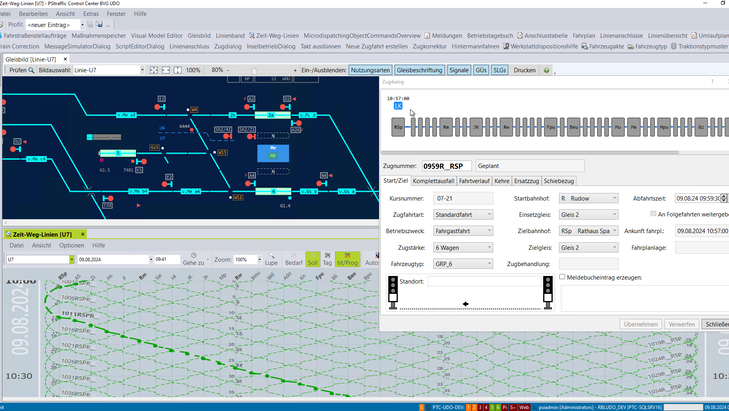
Case Study PSItraffic/TMS at Regionalverkehr Bern-Solothurn
The Regionalverkehr Bern-Solothurn (RBS) is using the PSItraffic system to improve train traffic and provide real-time information for passengers.
The Regionalverkehr Bern-Solothurn (RBS) is one of the most heavily used private railways in Switzerland. With the introduction of PSItraffic/TMS, RBS has made its train operations more efficient and improved passenger information in order to meet growing demands.
Regionalverkehr Bern-Solothurn: A leading Swiss transport company
The Regionalverkehr Bern-Solothurn (RBS) was founded in 1984 through the merger of the Solothurn-Zollikofen-Bern-Bahn and the Vereinigten Bern-Worb-Bahnen. Since then, the RBS has grown steadily and is now one of the most heavily used private railways in Switzerland.
With four railway lines and 19 bus lines, the RBS transports around 26 million passengers every year. It is known for its reliability and high service standards. Not to be forgotten is the RBS bus service, which began operating in 1966. For over 50 years, the RBS has been working as a well-coordinated team to ensure that its rail and bus services have coordinated timetables, optimal connections and short transfer times.

a train arrives at or departs from Bern RBS station
work for the RBS
are served by RBS
Challenges
Regionalverkehr Bern-Solothurn was faced with increasing passenger numbers and growing quality requirements. To meet these challenges, RBS was looking for a management system that would make rail operations more efficient and optimize passenger flow.
Challenges in optimizing train operations
An important goal of Regionalverkehr Bern-Solothurn is to ensure reliable and punctual train services. Rising passenger numbers and growing customer demands presented RBS with major challenges. In order to meet these challenges, RBS needed a train management system that supports and optimizes operational processes and exploits all performance-enhancing potential.

Objectives
The aim of RBS is to make train operations more efficient and at the same time increase passenger satisfaction. This is being achieved through the use of a modern train management system.
Efficient train services and increased passenger satisfaction
Regionalverkehr Bern-Solothurn (RBS) pursued several key objectives with the introduction of a new train management system:
- Increasing reliability and efficiency: optimizing train operations for more punctual connections and a smooth process.
- Improving passenger comfort: providing real-time information for better orientation and a more pleasant travel experience.
- Increasing passenger satisfaction: creating a modern and comfortable travel environment that meets the needs of passengers.
The new system helps to optimize operations, reduce delays and provide accurate passenger information in real time. As a result, passengers are better informed and feel more comfortable throughout their journey.

Solution approach
PSItraffic/TMS was chosen as the solution to optimize operations and provide passengers with real-time information. Various modules, such as the positioning and forecasting module, ensure precise train positioning and predictive timetable information.
The solution: The PSItraffic Train Management System
PSItraffic/TMS is a comprehensive solution for train management consisting of various modules that work together seamlessly:
- Tracking module: Combines data from different sources such as GPS, balises and track information to ensure highly accurate real-time localization of trains.
- Prediction module: Uses precise location data in conjunction with timetable information and current operating conditions to continuously calculate the timetable situation and predict train arrival times.
By integrating these modules, PSItraffic/TMS enables precise and predictive control of train operations. Passengers benefit from reliable real-time information that is seamlessly integrated into timetable information and display boards, contributing to a transparent and stress-free travel experience.
The implementation
RBS implemented the PSItraffic system, which facilitates the exchange of hardware and software components thanks to its modern system architecture. The system provides a real-time display of the trains and enables efficient dispatching by the dispatchers.
The implementation of PSItraffic/TMS at RBS
Regionalverkehr Bern-Solothurn (RBS) has implemented the PSItraffic system to ensure reliable and punctual train operations. This system is characterized by a modern system architecture that facilitates the replacement of hardware and software components and keeps maintenance costs low.
The central modules of the system include the positioning module and the forecasting module. The positioning module combines information from various data sources to determine the exact position of the trains. The forecasting module uses this data and the timetable data to calculate the estimated arrival times of the trains at the following stations.
Another important feature of the system is the visual timetable display, which visualizes the positions of all trains in the network and their predicted route in real time. This enables dispatchers to react quickly to changes and assign new routes if necessary.
The system also includes integrated disruption management and real-time passenger information, which helps to ensure optimal connections. Thanks to continuous monitoring and conflict detection, the system can identify problems such as train cancellations or delays at an early stage and initiate appropriate measures.
Overall, the PSItraffic/TMS system ensures safe and efficient train operation, optimized operational processes and improved passenger information.
This is how the RBS has benefited!
- Safe train operation with minimal financial outlay
- Continuous operation
- Integrated disruption management
- Real-time passenger information
- Connection security
- Modern system architecture enables simple replacement of hardware and software components and low maintenance costs
Conclusion
With the implementation of the PSItraffic system, RBS has taken a significant step towards efficiency and customer orientation. The system optimizes operational processes and provides real-time information that benefits passengers. These innovations show how technological advances can be used to achieve both economic and passenger-related goals and meet the modern requirements of rail transportation.


